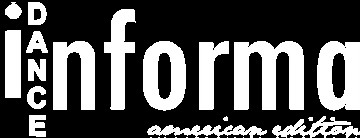We’ve all heard the saying, “Dance like no one’s watching,” but what does it truly mean, especially in our hyper-connected world? William Purkey, a respected author and educator, beautifully articulated this sentiment when he said, “You’ve got to dance like there’s nobody watching, love like you’ll never be hurt, sing like there’s nobody listening, and live like it’s heaven on earth.” While it might conjure images of carefree dancing in solitude or after a drink to loosen up, the essence of this quote goes much deeper.
For dancers, and indeed for everyone, “dancing like no one’s watching” is about moving without the weight of judgment, criticism, or the fear of others’ opinions. It’s about recapturing the pure joy of movement, like a child dancing in their bedroom to their favorite music. It’s about being present in your body and your expression, unburdened by external expectations. It’s about reconnecting with the fundamental reasons why you fell in love with dance in the first place – for the sheer fun of it, for self-expression, for connection with your inner self, and simply for the love of dance itself.
 DanceInforma Magazine USA 2024 Cover – Embrace the joy of dance and express yourself freely, just like dancing like no one's watching.
DanceInforma Magazine USA 2024 Cover – Embrace the joy of dance and express yourself freely, just like dancing like no one's watching.
In today’s society, it often feels like we are constantly under scrutiny. Social media platforms amplify this feeling, as we share our lives and open ourselves up to both admiration and critique. Moments of true privacy and self-reflection seem increasingly rare. Yet, it’s within these personal moments, when we move for ourselves and no one else, that we find profound power and self-discovery.
So, how do we reconcile the ideal of “dance like no one’s watching” with the reality of a world where it feels like everyone is watching? How do we embrace this liberating practice, especially when our profession as dancers often requires us to perform for audiences? And how can dancers and dance educators integrate this principle into their performances, careers, and lives beyond the studio?
Here are three key perspectives to help you embrace the spirit of dancing like no one’s watching:
Dance for Your Soul
One of the most powerful ways to embody “dancing like no one’s watching” is to consciously dance for yourself. This doesn’t necessarily mean dancing alone, but rather dancing without seeking external validation or praise. Dance to connect with your inner self, your deepest passions, and the emotions that words simply cannot express.
Are you truly able to dance solely for your own enjoyment and fulfillment? Many dancers find that they’ve become accustomed to dancing for external approval. It’s crucial to reconnect with the initial spark that ignited your dance journey. If you’re new to dance, explore rhythms and music that resonate with you and allow your body to respond instinctively. Let the music take over and guide you into a state of flow, where time seems to disappear. Dance because it feels inherently good. Dance because it offers an outlet for feelings that no other form of expression can capture. Dance to release pent-up tension, to let go of stress, and simply because you have the ability to move and express yourself through dance.
Dance to Communicate Your Truth
Consider using dance, whether through structured choreography or authentic, improvisational movement, as a powerful medium to convey a message, illustrate a point, or share your personal narrative. When you use dance as a form of profound expression and communication, you forge a deeper connection with your inner world. This connection makes it easier to dance without concern for judgment, because you are expressing your own authentic feelings, thoughts, and experiences – and no one can dispute your personal truth.
Allow your movements to become the language of your emotions and your story. Body language is estimated to constitute a significant portion of our daily communication. Honing your ability to communicate through movement empowers you to share your authentic self with the world in multifaceted ways. You might even explore learning dances rooted in your cultural heritage to deepen your understanding of your background and lineage, adding another layer of personal narrative to your dance.
Dance to Foster Connection
Beyond personal expression and storytelling, dance possesses an incredible power to connect people. Dance can strengthen existing communities and build new ones. It transcends barriers of race, culture, gender, and religion, uniting people through shared movement and rhythm. Cultures are preserved and passed down through generations through dance. Even individuals with vastly different backgrounds, united only by their shared humanity, can find common ground and connection through dance.
As a practice, dance therapy harnesses this connective power to build empathy, compassion, and trust among individuals seeking acceptance and belonging. A compelling example of dance’s community-building power is the haka, a traditional performance that embodies unity and connection.
Ultimately, connecting with your movement in a way that affirms your very being is essential. When your dance becomes an authentic expression of your inner self, it unlocks a sense of liberation and release that is unparalleled. For dancers who perform for audiences and interpret choreography created by others, embracing this principle will enrich your ability to communicate with your audience and connect with diverse choreographic styles. You will leave a lasting impression not through technical perfection alone, but through the genuine emotion and passion that emanates from your soul. Your authentic inner dancer will shine on stage, and that is the dancer everyone will be captivated by.
By Erica Hornthal, LCPC, BC-DMT, Dance/Movement Therapist, Chicago Dance Therapy.
